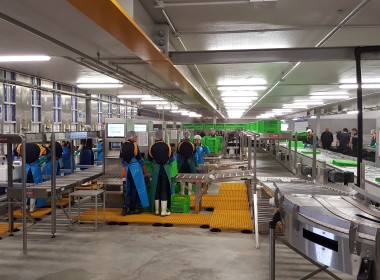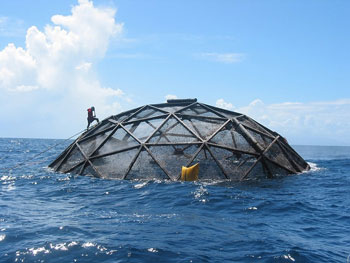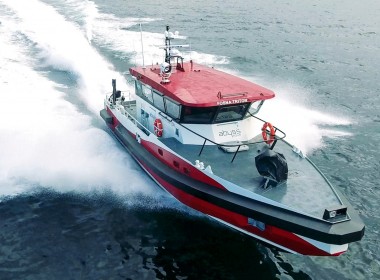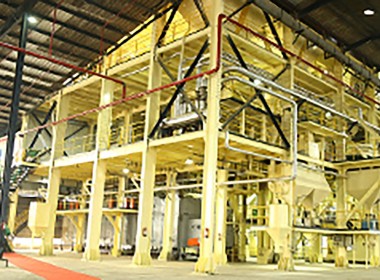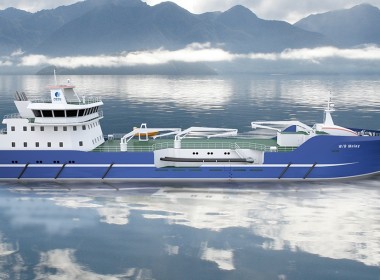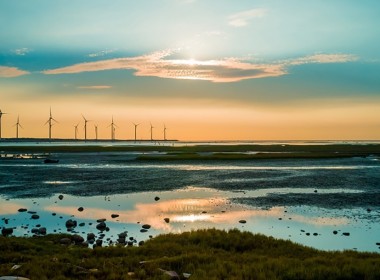Sugar kelp on menu for researchers
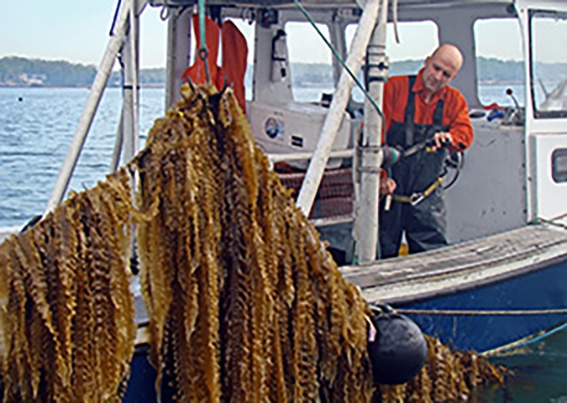
Researchers at the Northeast Fisheries Science Centre’s (NEFSC) Milford Laboratory in Connecticut are investigating using sugar kelp to improve commercial shellfish aquaculture operations.
A nutritious food that is high in fibre, vitamins and minerals and widely used in sushi, soups and salads, sugar kelp (Saccharina latissima) is a cold water or winter crop that could help shellfish growers diversify.
The marine algae, also known as sea belt and Devil’s apron due to its shape, is yellowish brown in colour. It can grow up to 3.7 metres long. When dried, a white sweet-tasting white powder forms on the frond.
Long known as a sweetener and as a thickening and gelling agent that can be added to food and cosmetics, sugar kelp is already being grown by commercial firms in New England for a variety of uses, from food to potential biofuels.
Milford Lab researchers tested individual kelp plants for desired traits such as high-temperature tolerance.
Judy Li and colleagues Steven Pitchford, Paul Clark and Yuan Liu are studying different organisms that may be growing on the sugar kelp surface at different stages during the kelp’s growth.
These organisms could include bacteria, micro- and macro-algae, and various animals that occur naturally in coastal and estuarine waters.
After a year working on a proof-of-concept under a NOAA Fisheries Office of Aquaculture grant, she and colleagues will be sampling kelp at a local commercial farm throughout the winter and spring growing season.
“We isolated Vibrio bacteria from the upper, lower and newly grown sections of the plant to see how abundance changes throughout the growing season and in what conditions,” Li said.
“Most Vibrio species are harmless, but some can cause illness as they do in shellfish under certain conditions.
“For sugar kelp, the good news is that Vibrio is absent during most of the growing season since this bacterial group prefers much warmer waters.
“We are looking at Vibrio because climate variability may be playing a role in the dynamics of these organisms. We are trying to inform growers so they can harvest in the best possible conditions.”
One of the Milford Laboratory’s sugar kelp collaborators received US$5.7 million from the Department of Energy through, Macroalgae Research Inspiring Novel Energy Resources (MARINER).
The grant to Woods Hole Oceanographic Institution will fund a selective breeding program for sugar kelp and an autonomous underwater observation system to monitor large-scale seaweed farms.
Grant partners include the University of Connecticut and GreenWave.


